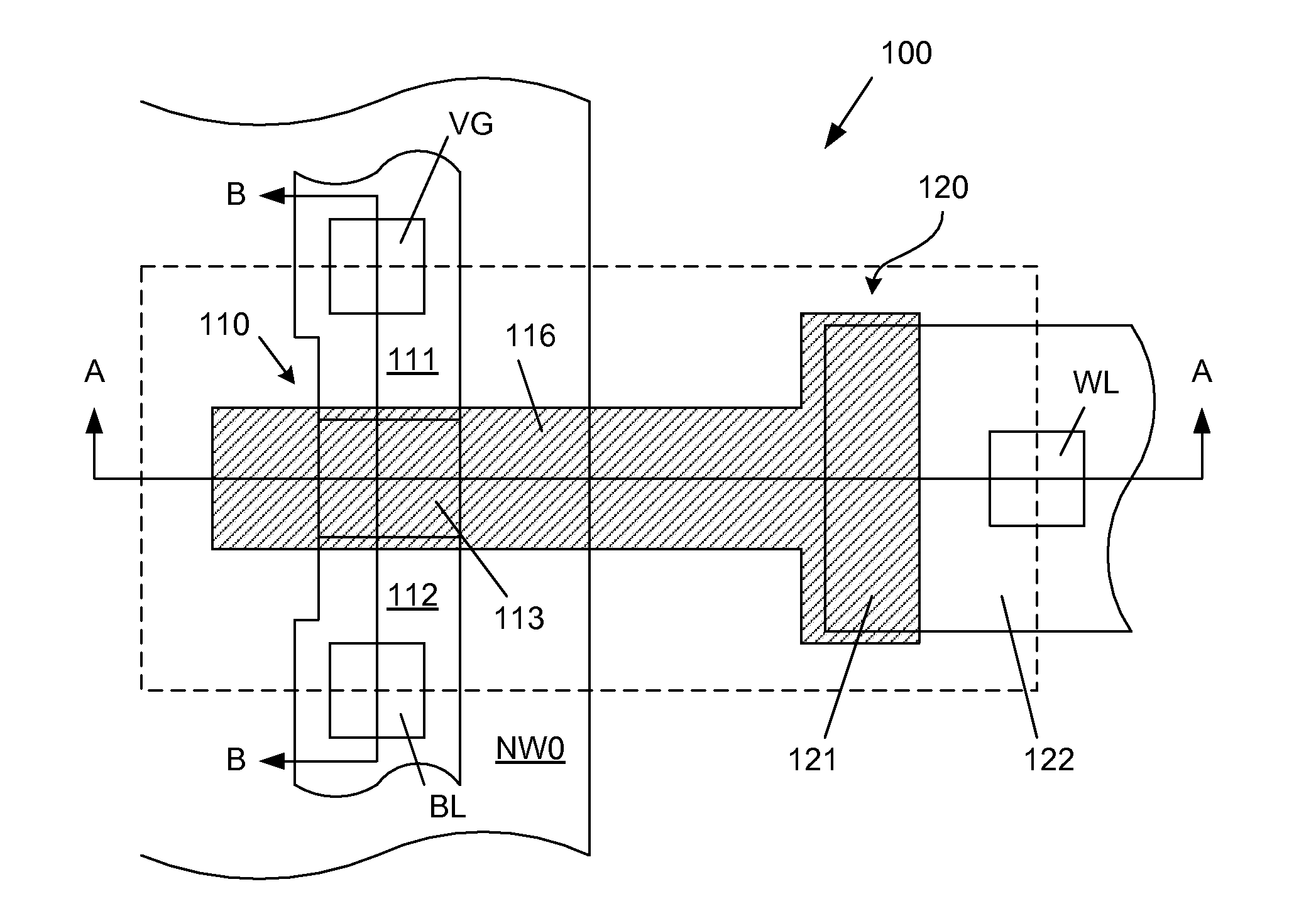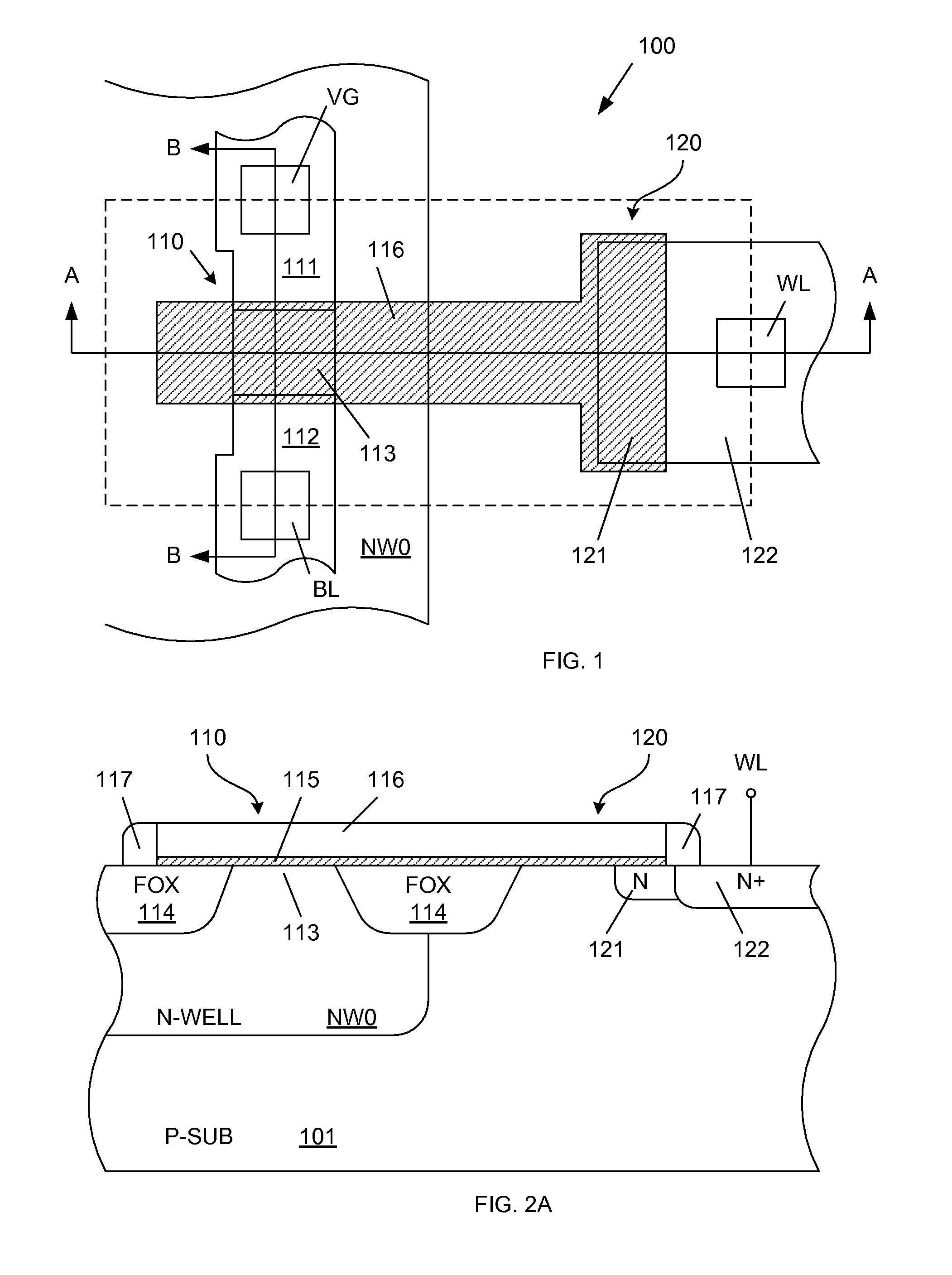Non-Volatile Memory Embedded In A Conventional Logic Process And Methods For Operating Same
a logic process and non-volatile memory technology, applied in the field of non-volatile memory, can solve the problems of incompatibility with a conventional logic process, charge trapping layer is not generally available in an asic or logic process, and is incorporated in the transistor used for logic gates, etc., to achieve low cost, minimize the probability of over-erasure of memory cells, and high efficiency
- Summary
- Abstract
- Description
- Claims
- Application Information
AI Technical Summary
Benefits of technology
Problems solved by technology
Method used
Image
Examples
Embodiment Construction
[0030]FIG. 1 is a top layout view of a non-volatile memory cell 100 that can be fabricated using a conventional logic process. FIG. 2A is a cross-sectional view of non-volatile memory cell 100 along section line A-A. FIG. 2B is a cross-sectional view of non-volatile memory cell 100 along section line B-B. The structure and fabrication of non-volatile memory cell 100 is largely described in commonly-owned U.S. Pat. No. 6,512,691 to Hsu et al., which is hereby incorporated by reference in its entirety.
[0031]Non-volatile memory cell 100 is fabricated in a p-type monocrystalline semiconductor substrate 101 (e.g., silicon). Non-volatile memory cell 100 includes a PMOS access transistor 110, having a p-type source 111 and a p-type drain 112 fabricated in an n-well region NW0. Source region 111 includes lightly doped source 111A and p+ source contact region 111B. Drain region 112 includes lightly doped drain 112A and p+ drain contact region 112B. A channel region 113 is located between sou...
PUM
 Login to View More
Login to View More Abstract
Description
Claims
Application Information
 Login to View More
Login to View More - R&D
- Intellectual Property
- Life Sciences
- Materials
- Tech Scout
- Unparalleled Data Quality
- Higher Quality Content
- 60% Fewer Hallucinations
Browse by: Latest US Patents, China's latest patents, Technical Efficacy Thesaurus, Application Domain, Technology Topic, Popular Technical Reports.
© 2025 PatSnap. All rights reserved.Legal|Privacy policy|Modern Slavery Act Transparency Statement|Sitemap|About US| Contact US: help@patsnap.com



